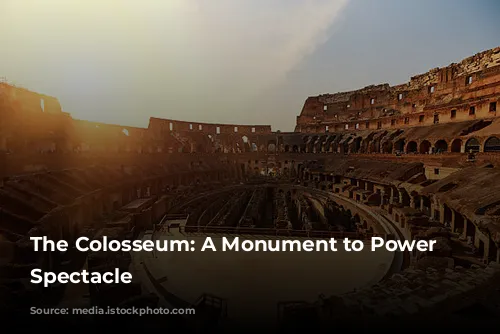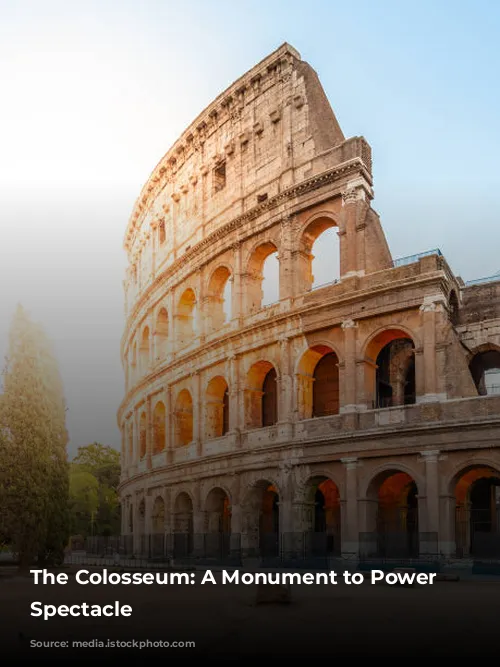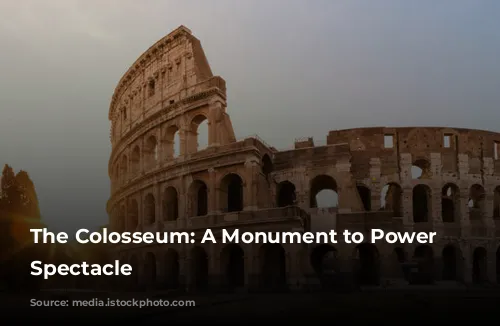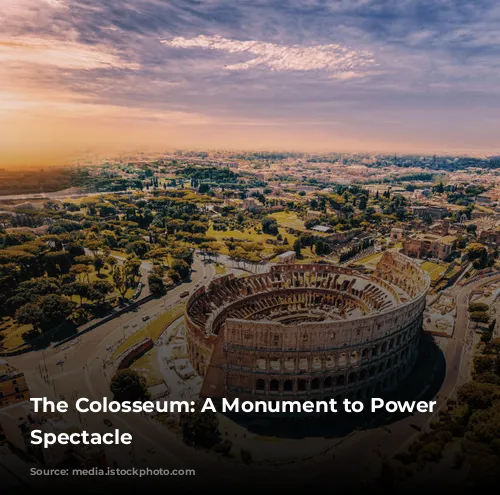The Colosseum, also known as the Flavian Amphitheatre, stands as a towering testament to the grandeur and brutality of the Roman Empire. This iconic structure, the largest amphitheatre in the Roman world, is more than just a pile of stones; it is a window into the past, offering glimpses into the lives, the entertainment, and the values of a civilization that has long since vanished.
A Colossal Creation
Emperor Vespasian, the founder of the Flavian dynasty, began construction on this massive monument in 70 A.D., a project that would continue under his son Titus. After almost a decade of tireless work, the Colosseum was inaugurated in 80 A.D. with an extravagant 100-day celebration that included gladiatorial combats, wild animal hunts, and even staged naval battles known as naumachiae. Imagine the spectacle of thousands of spectators, their eyes glued to the arena where battles raged, animals were slain, and the echoes of roars, cheers, and screams filled the air!
From Colossal Statue to Colosseum
But why is it called the Colosseum? The name is believed to have originated from a colossal statue of Emperor Nero, the “Colossus”, which stood near the amphitheatre. It’s quite a coincidence, as the prophecy by Venerable Beda, a medieval monk, linked the Colosseum’s fate to Rome’s: “Rome will exist as long as the Colosseum does; when the Colosseum falls so will Rome; when Rome falls so will the world.”
A Marvel of Roman Engineering
The Colosseum’s construction was a testament to the Romans’ mastery of architectural techniques. The impressive structure was built using arches, a hallmark of Roman engineering. Imagine the sheer scale and complexity of the Colosseum, built with eighty arches on each of its first three floors, all adorned with massive statues!
A Legacy of Power and Spectacle
Over time, the Colosseum’s purpose shifted from a bustling entertainment hub to a source of building materials. The marble, lead, and iron were plundered from the structure to build palaces and churches, leaving behind a skeletal shell of its former glory. Even today, we can see the holes where these materials were extracted, remnants of a time when the Colosseum was a quarry rather than an arena.
Inside the Colosseum: A Glimpse into Roman Life
The Colosseum was more than just a venue for entertainment. It was a microcosm of Roman society, with a hierarchy of seating based on social status. The common folk occupied the upper tiers, separated by gender, while the elite and powerful sat close to the arena. The emperors themselves even had their own special seating areas, where they could witness the spectacle from a privileged vantage point.
Gladiators: Heroes of the Arena
The gladiators were the stars of the Colosseum, attracting crowds of enthusiastic spectators. They were not simply condemned prisoners, but often volunteers who saw the arena as a path to fame, fortune, and freedom. Their skills were honed in special training schools, and their battles were as captivating as any modern sport.
A Variety of Shows
The Colosseum hosted a diverse array of events, ranging from the brutal to the peculiar. Venationes, or wild animal hunts, pitted men against beasts in a deadly game of survival. But there were also performances that were less violent, like the elephant who was trained to write in the sand.
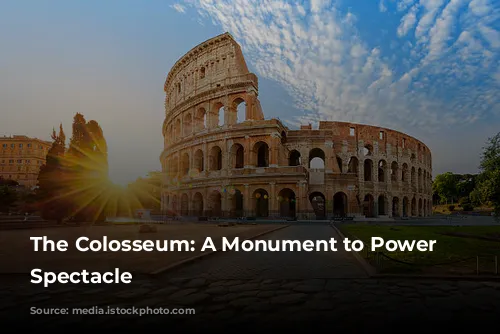
A Symbol of Roman Values
The Colosseum wasn’t merely a place for entertainment. It served a deeper purpose: it reflected the values of the Roman Empire, showcasing its power, its might, and its control over its conquered lands. The games and spectacles offered a way for the Romans to connect with their leaders, to share in a collective experience, and to find a temporary escape from the realities of life.
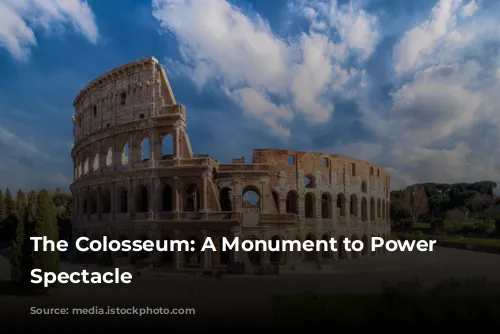
A Timeless Legacy
The Colosseum, though a relic of a bygone era, continues to fascinate and inspire people today. It’s a reminder of the grandeur, the brutality, and the complexity of the Roman Empire, and it serves as a powerful testament to the ingenuity and resilience of humanity. The Colosseum’s echoes still resonate through the ages, a reminder that even in the face of time and decay, the spirit of this magnificent monument lives on.
